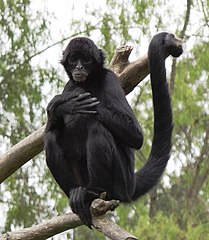We've learned now about measuring distance, time and velocity.
A word for the way these things work together is called kinematics,
which really just means a way to understand moving things.
Using kinematics, we can use the things we can measure in a special way,
we can use two of them to figure out the third one!
So if you drive in a car, and you know how fast you went (velocity v)
and how long it took you to get somewhere (time t)
you can figure out how far you went! (distance d)
Let's say we went 10 miles per hour (v = 10mph)
and we went for 2 hours (t = 2h)
We can figure out our distance (d) by multiplying v times t.
If you know some algebra, it looks like this:
d = v * t
d = 10mph * 2h
d = 20 miles
We can do the same thing with time, but we divide our distance by our velocity:
t = d / v
And we can get velocity if we have distance and time.
d = v * t
Fun!

(from: wikipedia - kinematics)






